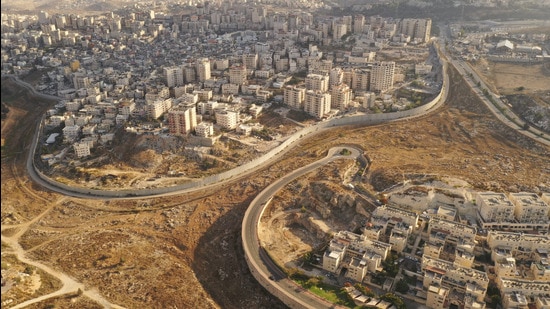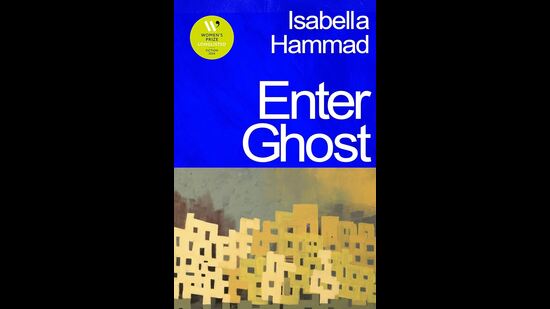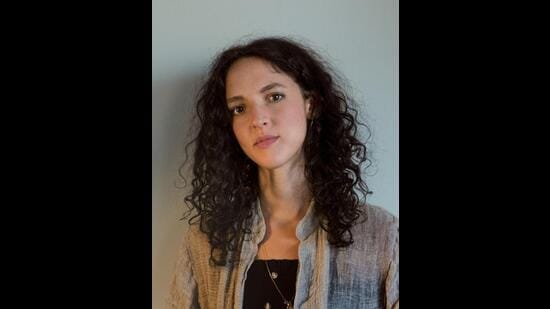Review: Enter Ghost by Isabella Hammad
In the novel that was shortlisted for the Women’s Prize this year, a Palestinian woman born in the UK is forced to face the reality about Israeli settler colonialism and the ghost of her own family’s resistance to it
Hamlet was once banned in Israeli prisons on account of the famous soliloquy “To be or not be”, which was interpreted as a call to resistance. Isabella Hammad draws on such provocative contexts in her novel Enter Ghost, which made it to the Women’s Prize shortlist this year. In the book, the Shakespearean tragedy is being translated into Arabic for a production in the West Bank and the protagonist, Sonia, is forced to face the reality about Israeli settler colonialism and the ghost of her own family’s resistance to that oppression.

A Palestinian woman born in the UK, Sonia, who revisits her homeland carries with her the disillusionment of the two intifadas. She thinks her chord to Palestine has been severed. This trip, however, will prove her wrong. Sonia has decided to visit her sister, an academic in Tel Aviv. Unlike Sonia, who has spent her life escaping her Palestinian heritage, Haneen is politicised. During the trip, Sonia meets Mariam, an earnest stage director who draws her into playing a part in her production of Hamlet in the West Bank. The commitment will eventually be a homecoming for Sonia.

The story in the novel is being recorded more than seven decades after the Nakba – the term, which means “catastrophe” in Arabic is used to describe the mass displacement of Palestinians during the Arab-Israeli war of 1948 as well as the ongoing Israeli persecution of Palestinians. Naturally, the memory of the characters is also a ghost that has been handed down through a chain, several links of which are missing now. Hypermnesia and monomania feature as dominant themes in Palestinian literature and they become a means to reclaim what has been lost. Sonia’s grandparents, who bravely held on to their home in Haifa in 1948 “under the butts of the Zionist’s guns” also hand down their Nakba story to Sonia as an inheritance.
Israeli settler colonialism rendered thousands of Palestinians homeless. Those who refused to leave had to endure the humiliation of living on their land as Israeli citizens. Enter Ghost explores the relationship of Palestinians living in Israel, which is referred to as “inside”, to those who live in the West Bank. Sonia, who is slowly pushed into playing a part in Hamlet in the West Bank, has to revisit this tenuous relationship for herself. What then is the West Bank to her? “Unknown”? Once she is outside, the “inside” transforms into “enemy territory”. The optics of the occupied territory change as she moves away and towards it.
As Sonia commutes from Haifa to Ramallah, the degree of encroachment by Israeli settlers is slowly revealed to the reader. Even the splintering of Palestinian land into areas of control does not guarantee any independence for them in the West Bank, where Israel controls more than 60% of the land. The threat of the Israeli army closing in and the violence of settlers plays out continuously in the novel. Art clashes with the repressive state apparatus head on. The production of Hamlet is stopped multiple times by Israeli authorities and surveillance breeds a suffocating paranoia. These conditions seem utterly unsuitable for the production of a live play. Yet, the team does put on a show. Even under political oppression, Hammad’s characters yield an artistic renaissance.
The author is wary of the glorification of art and of viewing it as akin to resistance. As a result, Enter Ghost emerges as a deeply nuanced work on both art and the nature of occupation. In a prophecy of the massive online blocking campaign that followed celebrities after this year’s Met Gala, Mariam states, “And let them eat cake!”, while debating whether people should just enjoy their art. She even lingers over her own complicity in deadening resistance.
The device of the theatre is used to its full potential though it has to be said that the constant dialogues are sometimes exhausting, and break the flow of Hammad’s lyrical prose. The book is narrated in the first person by Sonia and occasionally shifts to third person, playing out like scenes from a play. In these scenes, the narrator’s gaze transforms into a surveillance drone, recording every movement made by the characters, underscoring the subtext. Here, Sonia is relieved of the burden of the narrative voice and she too becomes part of the collective. The omniscient narrator atomizes daily life by staging it like a play. The novel maintains the delicate balance between dramatizing daily life and recording an interiority that is hard to capture in action.
Hammad takes her time with the latter. The plot moves at an uncanny slow pace, yet there is hardly a dull moment in the novel. It is perhaps the author’s total submission to the characters that sets this story apart. It is quite hard to mark the crescendo. The ending could easily be the beginning; the occupation is never ending so naturally no prologue or epilogue feature in this story of resistance.
In the book, the mass protests of 2017 in Jerusalem mark a pivotal point. Haneen and Sonia attend the protests against the installation of electric gates and metal detectors around Masjid Al-Aqsa. In this electrifying scene, Sonia, a Christian offers namaz with the protestors. As the Israeli force surrounds them on all sides, she asks the rhetorical question that we dare not answer: “Did they genuinely believe they were guarding against a group of Muslim fanatics? We, the backward natives.” This time around, as Israel razes Gaza to the ground and live images of war flash across social media, western media coverage still reflects a deep seated bias and a purposeful vilification of victims from the besieged Gaza strip.

Though the international media has attempted to paint the question of Palestine as one of Jews vs Muslims, religion is almost never an identity marker for the characters in Hammad’s novel. In an interview with Hyphen, she said: “The optics of the occupation of east Jerusalem, the West Bank and Gaza are often framed by the incurious as based in religion, but it’s settler colonialism, and it’s about land.”
The hyphenation of Israel-Palestine lends itself to the mainstream discourse as an equalizer. The line equidistant from both of these places in the popular imagination creates the illusion of symmetry and equality. This passive framing falsely creates an image of two warring nation-states with clear cut boundaries. Hammad breaks this illusion by creating spatial awareness through the medium of storytelling. Her novel unmasks Israeli settler colonialism by slowly revealing the West Bank as the other – one that’s emaciated, deprived, and under the chokehold of surveillance.
Hammad’s art of fiction derives its sustenance from the symbols of Palestinian resistance. They converge in this novel, making it reverberate with strength. Art under occupation is not just a fantasy but finds fulfilment through this novel. Like the poets from Gaza who continue to strive for their voices to be heard, Hammad’s characters too strive to enact their play. They are displaced multiple times by the Israeli authorities, and just like in contemporary Gaza, Hammad shows us that the Nakba is not over.
Rutba Iqbal is a writer based in Delhi. She writes on books, art, culture, and movies.





